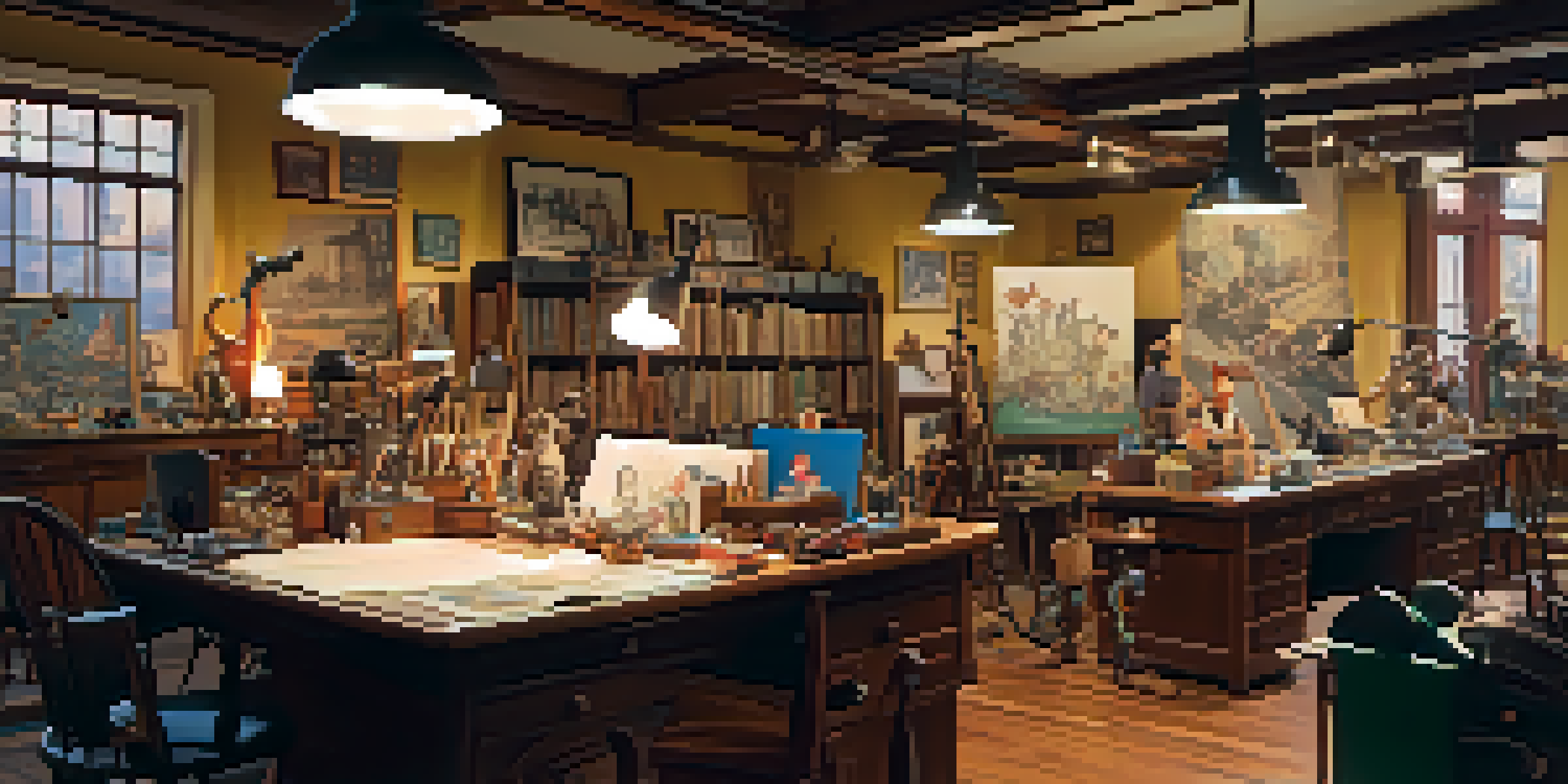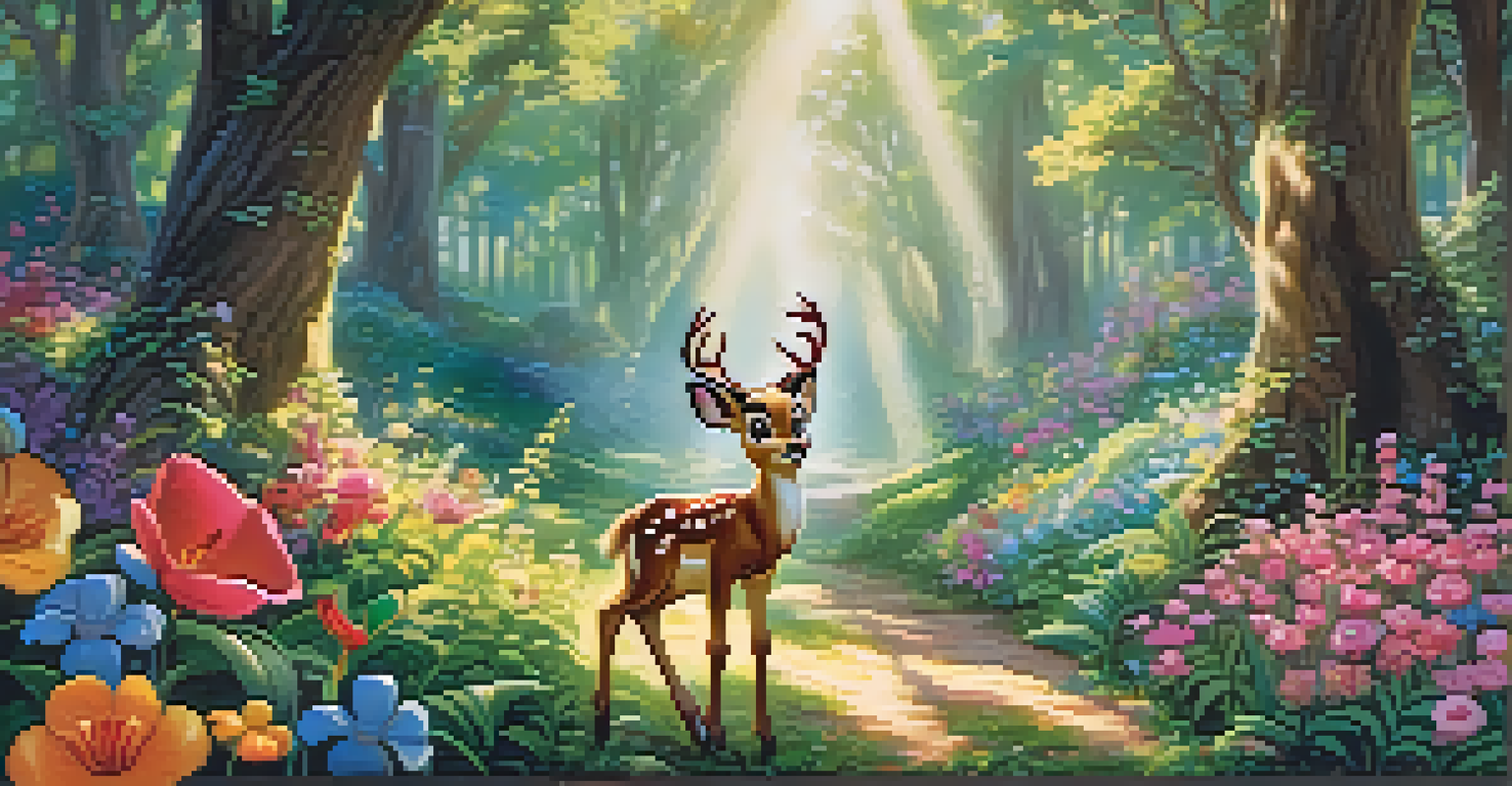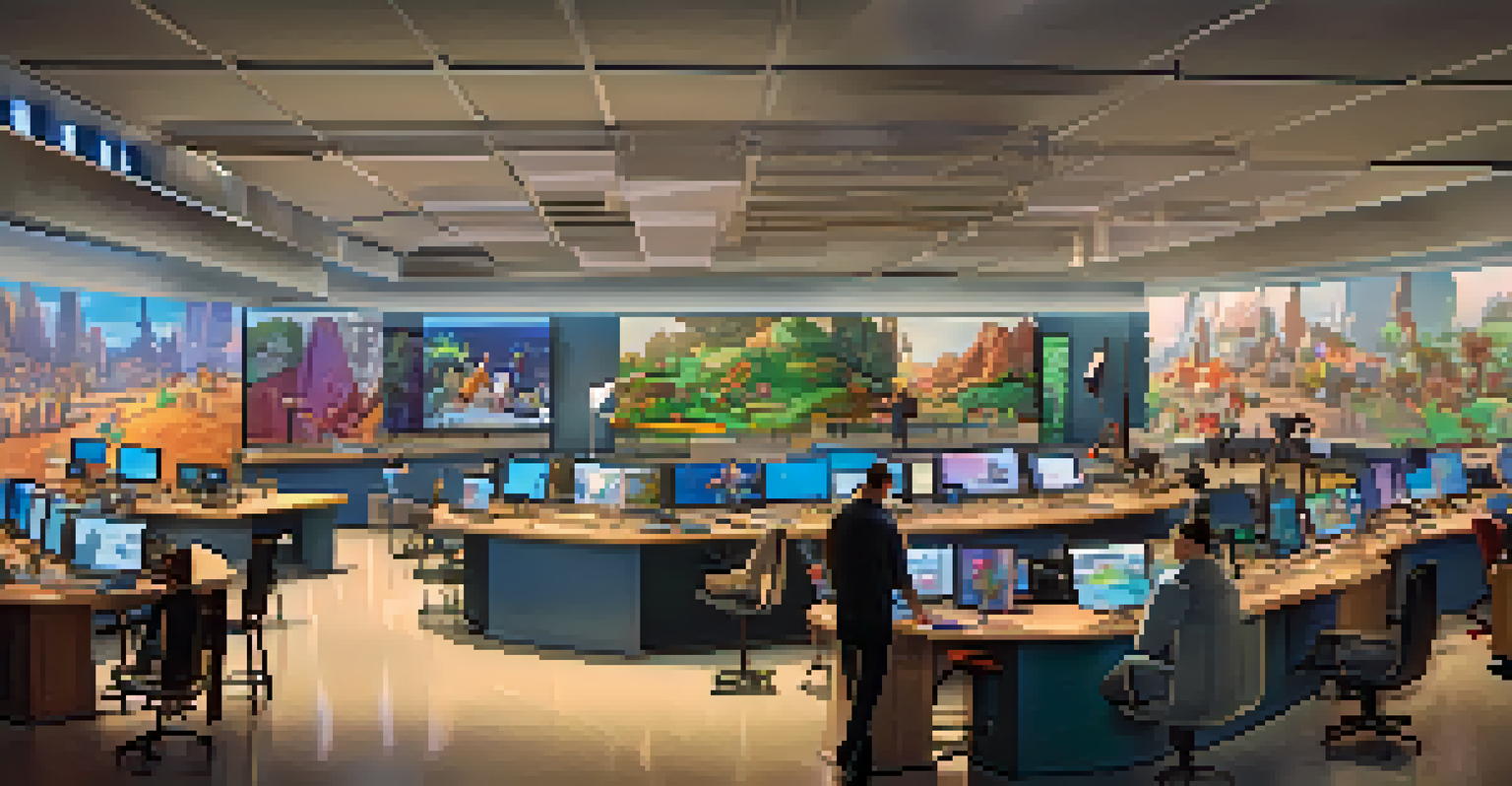Disney's Impact: Shaping Hollywood Animation Over Decades

The Birth of Animation: Disney's Early Innovations
In the early 1920s, Walt Disney and his team began to reimagine animation, giving birth to iconic characters like Oswald the Lucky Rabbit. This was a time when animation was relatively new, and Disney pushed boundaries with his creative storytelling and character development. The creation of Mickey Mouse in 1928 with 'Steamboat Willie' marked a significant turning point, introducing synchronized sound into animated films and capturing audiences' hearts.
Animation can explain whatever the mind of man can conceive.
Disney's innovative techniques didn’t stop there; in 1937, he released 'Snow White and the Seven Dwarfs,' the first-ever feature-length animated film. This groundbreaking project set the standard for storytelling in animation and proved that animated films could be both commercially successful and artistically significant. It also paved the way for future full-length animated features, inspiring studios around the world.
As Disney continued to innovate, he not only transformed animation but also established a model for the industry. His blend of music, humor, and relatable characters created a magic formula that would define animated storytelling for generations, influencing both emerging and established filmmakers.
The Golden Age: Disney's Unmatched Creativity
The 1940s and 50s are often referred to as the Golden Age of Disney, a period characterized by a flurry of iconic releases including 'Pinocchio,' 'Bambi,' and 'Cinderella.' These films not only showcased stunning animation but also introduced timeless themes of love, bravery, and self-discovery. Each release further solidified Disney's reputation as a leader in the animation industry.

During this time, Disney also experimented with different animation techniques, such as the use of Technicolor, which added vibrancy and depth to his films. The emotional storytelling paired with beautiful visuals resonated with audiences, making Disney's films a staple in family entertainment. This era laid the groundwork for the studio's ongoing success and established a legacy of quality that was hard to match.
Disney's Innovation in Animation
Walt Disney revolutionized animation with groundbreaking techniques, like synchronized sound and feature-length films, setting a new standard for storytelling.
Disney’s influence extended beyond individual films; he was instrumental in defining the role of animation in popular culture. The combination of compelling narratives and unforgettable characters created an emotional connection that would keep audiences returning for more, ultimately shaping the direction of Hollywood animation into the future.
The Evolution of Animation Techniques at Disney
As technology advanced, so did Disney's approach to animation. The transition from hand-drawn animation to computer-generated imagery (CGI) marked a significant shift in the industry. With the release of 'Toy Story' in 1995, Disney, in collaboration with Pixar, introduced a new era of animation that captivated audiences with stunning visuals and intricate storytelling.
Disneyland is a work of love. We didn't go into Disneyland just with the idea of making money.
This shift represented not just a technological advancement but a philosophical change, emphasizing the importance of storytelling in animation. Disney's ability to adapt to new technologies while maintaining its core values of creativity and innovation set it apart from other studios. The success of CGI films proved that animation could evolve while still capturing the magic that Disney is known for.
Additionally, Disney's investment in new technologies has led to the development of animated films that appeal to a wider audience. By embracing both traditional and modern techniques, Disney continues to push the boundaries of animation, inspiring a new generation of animators and storytellers.
Disney's Impact on Global Animation Culture
Disney's influence extends far beyond the borders of the United States; it has permeated global animation culture. Films like 'Mulan' and 'Moana' showcase not just Disney's storytelling prowess but also its commitment to cultural representation. By incorporating diverse stories and characters, Disney has broadened the landscape of animated films, allowing audiences worldwide to see themselves reflected on screen.
Moreover, Disney's success has inspired countless animators and filmmakers around the globe. Many international studios have adopted Disney's model of combining artistry with compelling narratives, leading to a renaissance in animation worldwide. This ripple effect has encouraged a new wave of creativity and innovation, as animators seek to express their unique cultural narratives.
Cultural Influence of Disney Films
Disney's commitment to diverse characters and narratives has not only expanded global animation culture but also inspired filmmakers worldwide.
Disney's global impact is evident in how animation has become a universal language of storytelling, bridging gaps between cultures. As Disney continues to expand its horizons, it shapes not just Hollywood but the global animation landscape, proving that great stories can resonate with audiences everywhere.
Character Development: Disney's Unique Approach
One of Disney's most notable contributions to animation is its focus on character development. Disney characters are often multi-dimensional, facing challenges and undergoing significant growth throughout their stories. This emphasis on character arcs allows viewers to connect emotionally, making the narratives more impactful and memorable.
Characters like Simba from 'The Lion King' and Elsa from 'Frozen' are not just protagonists; they embody complex emotions and relatable struggles. This depth enhances the audience's investment in their journeys, creating a lasting emotional bond. Disney's ability to create relatable characters has set a benchmark for storytelling not only in animation but across all forms of media.
The studio's approach to character development has also influenced how stories are crafted in Hollywood. Other filmmakers have taken notes from Disney's playbook, recognizing that strong, well-rounded characters are essential for captivating audiences. As a result, the focus on character-driven narratives has become a hallmark of modern animated films.
The Role of Music in Disney Animation
Music has always played a pivotal role in Disney's storytelling approach. From the catchy tunes of 'The Little Mermaid' to the powerful ballads in 'Frozen,' Disney has mastered the art of integrating music with storytelling. Songs not only enhance the emotional depth of the narratives but also serve as memorable hooks that keep the stories alive in the hearts of audiences.
The collaboration with renowned songwriters and composers has resulted in timeless soundtracks that resonate across generations. Disney's music often becomes synonymous with its films, creating an enduring legacy that transcends cultural boundaries. The infectious melodies and heartfelt lyrics invite audiences to sing along, further engaging them in the story.
Character Depth in Storytelling
Disney's focus on multi-dimensional character development has created emotional connections with audiences, influencing storytelling across all media.
This emphasis on music has influenced the broader animation industry, encouraging other studios to prioritize soundtracks as a key component of their films. As Disney continues to produce musicals, it sets trends that shape the expectations of animated storytelling, proving that a powerful song can elevate a story to new heights.
The Future of Disney Animation: Trends and Innovations
Looking ahead, Disney continues to innovate and adapt to changing audience preferences. With advancements in technology, the potential for interactive storytelling has emerged, allowing viewers to engage with narratives in new ways. Disney has begun experimenting with virtual reality and augmented reality, hinting at a future where audiences can immerse themselves in their favorite stories.
Additionally, Disney is increasingly focusing on inclusivity and representation in its narratives. By prioritizing diverse stories and characters, the studio aims to reflect the world as it is, ensuring that all audiences feel seen and heard. This shift not only enriches Disney's storytelling but also resonates with a modern audience seeking authenticity.

As Disney embraces these trends, it remains committed to its core values: creativity, innovation, and storytelling. This dedication ensures that the magic of Disney animation will continue to enchant audiences for decades to come, shaping the future of the industry while honoring its rich legacy.